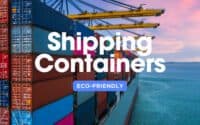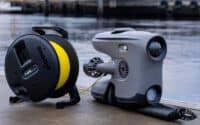The Renaissance of Wind-Powered Cargo Ships: A Step Towards Decarbonising Maritime Transport
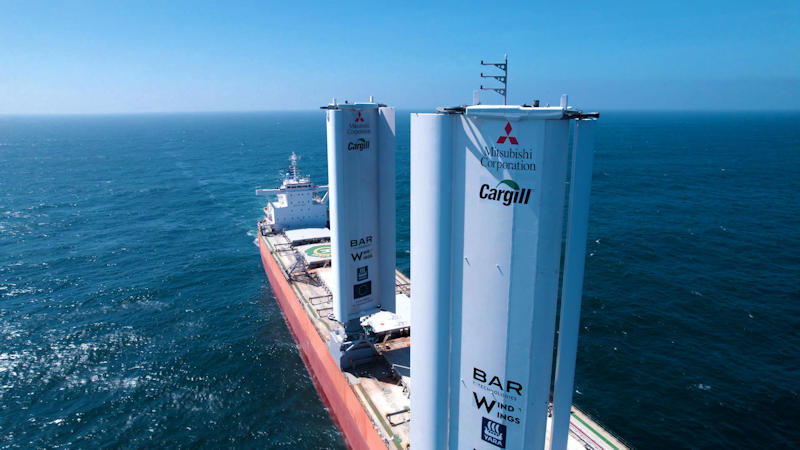
The maritime industry is standing on the cusp of a revolution. A recent pioneering endeavor has thrust wind-powered technology back into the limelight, presenting a viable option for the modern-day shipping industry.
* Please send feedback/suggestions to editor @ shipuniverse.com
A cargo vessel, fitted with towering, British-designed sails known as WindWings, embarked on its maiden voyage recently. The firm behind this project, Cargill, chartered the ship with high hopes of leading the shipping sector towards a sustainable future. These technologically advanced sails aim to significantly reduce fuel consumption, thus minimizing the carbon footprint of shipping operations.
Shipping contributes approximately 2.1% of worldwide carbon dioxide emissions. However, initiatives like the one by Cargill could greatly diminish this figure. When the ship, named Pyxis Ocean, journeys from China to Brazil, it will not only be transporting goods but also providing a tangible test for the efficiency and effectiveness of WindWings.
In a design that merges innovation with practicality, these wings remain folded while the ship is docked. Once out in the open ocean, the 123ft (37.5m) sails are unfurled, constructed with the same durable materials used in wind turbines. By harnessing wind power, these sails have the potential to cut a ship’s lifetime emissions by a commendable 30%.
Jan Dieleman, the president of Cargill Ocean Transportation, has expressed that the maritime industry is earnestly trying to reduce its carbon footprint. He acknowledges the challenges ahead but is optimistic about the speed of ongoing transformations.
This wind-assisted propulsion technology traces its roots back to the UK, birthed by BAR Technologies. Interestingly, the firm has ties with Sir Ben Ainslie’s 2017 America’s Cup team, often dubbed as the ‘Formula One of the seas’. John Cooper, who previously worked with the Formula One team McLaren and is now at the helm of BAR Technologies, anticipates this voyage to be a game-changer for maritime transport.
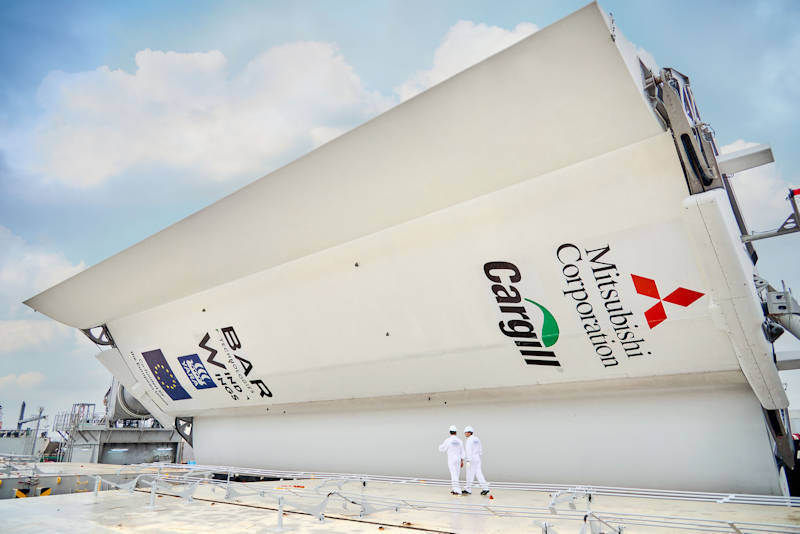
“WindWings are expected to save 1.5 tonnes of fuel, per wing installation, per day, and save 4.65 tonnes of CO2 per WindWing per day – if using heavy fuel oil. is makes the technologynot only a pre-eminent choice for vessel owners and operators racing to reduce carbon emissionsfrom their eets, but also a highly compelling business case. We look forward to supporting theglobal shipping industry as it transitions to greener, cleaner propulsion and design.”
– John CooperCEO, BAR Technologies
Experts advocate exploring wind power as the maritime industry grapples with the challenge of reducing the nearly 837 million tonnes of CO2 it emits annually. Operational measures, such as retrofitting ships with wind-based technologies, could play a pivotal role in this transition. Even though the number of ships using this technology has doubled in the past year, its adoption is still in its infancy.
However, the optimism surrounding wind technology’s potential doesn’t negate the complexities. Certain ships might find this tech incompatible, especially if the sails hinder container unloading. As Stephen Gordon from Clarksons Research has pointed out, the maritime industry’s path to decarbonization will likely involve multiple solutions. The launch of the wind-powered Pyxis Ocean does indeed signal a significant stride toward a sustainable and green future for the global shipping industry.
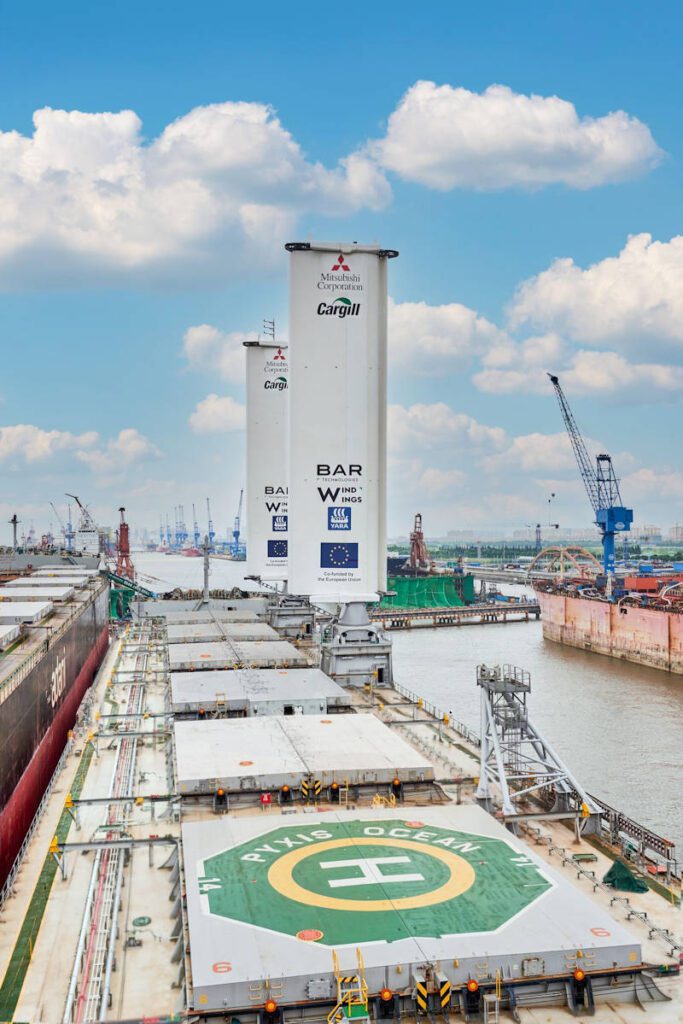

Do you have a Maritime Product or Service that may be of interest to Shipowners? Tell us about it here!
Do you have feedback or insights? Please reach out to editor @ shipuniverse.com


